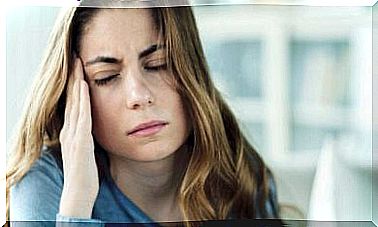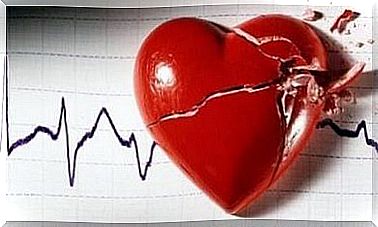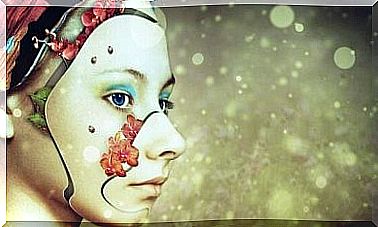Alien Hand Syndrome: A Condition We Should Learn More About

Alien hand syndrome (AHS) is an unusual neurological disorder. Due to the severe disabilities it causes, it is a condition we should learn more about.
The body experience is a very complicated process. In fact, it involves several sensory signals. When there is a problem with these signals, various neurological disorders can occur, such as feeling that an amputated limb is still there or that you have more than two arms or legs.
The story of alien hand syndrome
In 1908, Goldstein described the case of a patient who had a stroke on the right side of the brain. After the blow, the patient claimed that her left leg was weak and she even felt that her left arm did not belong to her.
In 1944, Akelaitis described a case of two patients in whom the corpus callosum had been incised to treat epilepsy. One of them claimed that his left hand was making involuntary movements, as opposed to what he wanted his right hand to do. Doctors called the condition diagnostic dyspraxia.
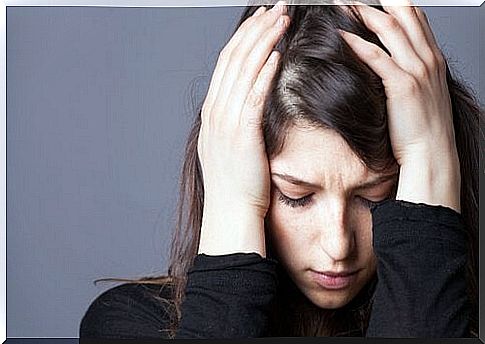
In 1972, Brion and Jedynak called the condition alien hand syndrome. These authors interpreted the erratic behavior of the left hand as a pathognomonic sign of callosal lesion. They analyzed the behavior of four patients who had many signs of disconnection syndrome. Their symptoms include:
- Problems naming objects that were out of sight of the left hand.
- Difficulty making movements with the left hand after a verbal command.
- Construction practice.
- Agraphy on the left hand side.
- Hemispatial neglect or attention deficit.
- Difficulty sending sensory information from one hand to the other.
After all their research, they were able to demonstrate that the symptoms of AHS could be associated with several nosological disorders.
Alien hand syndrome
Patients with AHS feel that their limbs are moving by themselves, that they are making involuntary movements that seem intentional. In fact, these movements often counteract the opposite limb.
Those affected by this syndrome tend to believe that their limbs are not part of the body. It is as if they do not belong to them. In many cases, they are afraid of these involuntary movements, trying to focus all their attention on stopping or preventing them.
Sometimes, patients suffering from alien hand syndrome are able to control themselves voluntarily. Because of this, author Biran and his collaborators suggested in 2006 that AHS had three main elements:
- The limb is inhibited and tends to respond to rational environmental stimuli, resulting in use behaviors.
- The sequence of the motor fragments in the uncontrolled limb makes the movements seem voluntary and controlled.
- There is a clear awareness of the behavior of alien limbs.
Therefore, in stressful situations, AHS may worsen.
Experts also say that:
- Interesting nearby objects can trigger the symptoms.
- The behavior is manifested when the patient has low levels of attention.
What causes AHS?
You may be asking yourself what causes alien hand syndrome. Surgical procedures, such as corpus callosotomy to treat drug-resistant epilepsy (a procedure that is no longer performed) and tumor removal, are the culprits.
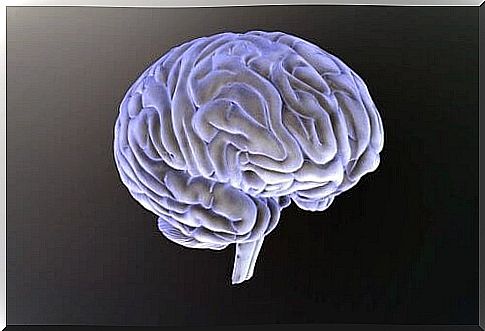
Types of alien hand syndrome
Frontal AHS
Frontal AHS results in damage to certain areas of the brain:
- Supplementary engine range
- Cingular cortex
- Prefrontal cortex
- Corpus callosums (frontal lobe)
Damage to the medial frontal cortex causes changes in the opposite hand.
Callosal AHS
- Manifested in the same hand as the dominant half of the brain.
- Manifested in patients whose corpus callosum is damaged.
- Thus, damage to the frontal non-dominant hemisphere can be associated with it, especially the extra motor area.
- There may be a conflict between the two hands and apraxia.
In the last decade of the 20th century, several authors defined a new type of AHS: posterior AHS. This variant is less common than those mentioned above and is characterized by independent movements and personification of the affected limb.
Treatment
The treatment of this syndrome consists of several techniques:
- Perception and control boost.
- Stress management.
- Compensatory strategies.
A movie reference
In 1964, Stanley Kubrick directed a film called Dr. Strangelove based on the novel Red Alert by Peter George. The novel tells the story of a mad commander who tries to start a nuclear war and how others tried to stop him.
Strangelove is a very extravagant character who experiences strange movements in the limbs. His right hand appears to be alive, and throughout the film its movements seem involuntary and inappropriate. In fact, the doctor tries to control these movements with his other hand. Thus, the film successfully shows what it is like to live with AHS.


